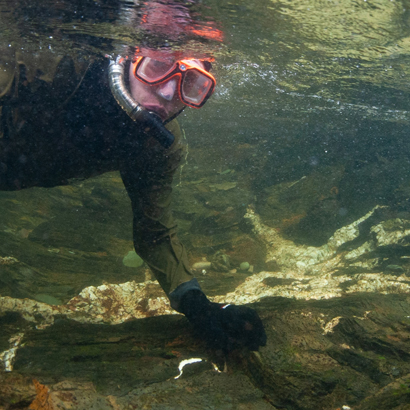Faculty
Ragan Callaway
Professor
Contact
- Office
- Natural Sciences Annex 106
- Phone
- 14065402971
- ray.callaway@mso.umt.edu
- Website
- none
- Curriculum Vitae
- View/Download CV
Education
B.S. Westmont College, 1978
M.S. University of Tennessee, 1983
Ph.D. University of California, Santa Barbara, 1990
Research Interests
The primary focus of the research in my lab is on interactions among plants. These include direct interactions, such as competition for resources, allelopathy, and facilitation; and indirect interactions mediated by herbivores, soil microbes, and other plants. Although I continue to pursue research on positive interactions in plant communities, mostly in collaboration with the international Alpine Pals research group, most of my current work is on interactions between exotic invaders and native species. These invaders include Centaurea stoebe, C. diffusa, C. melitensis, C. solstitialis, Alliaria petiolata, Acroptilon repens, and Prosopis juliflora. We have found that one of the worlds nastiest invaders, C. diffusa, are more allelopathic to species in invaded areas than species with which they coexist in Eurasia. Our research has also demonstrated strong effects of soil microbes (primarily fungi) on Centaureas invasive capabilities, and that biogeographical differences in soil microbial communities play a large role in the benign effects of C. stoebe on native Eurasian communities, but the devastating effects of this species on invaded communities. These biogeographical differences include significant negative feedbacks between soil microbes from Eurasia and Centaurea, but significant positive feedbacks between soil microbes from North America and Centaurea. Considered as a whole, research in my lab indicates that when humans introduce some plant species to new regions they force together species with different evolutionary trajectories from different continents, disrupting communities but providing opportunities to test long held ecological paradigms.
Selected Publications
Atwater, D.Z. and R.M. Callaway. 2015. Testing the mechanisms of diversity-dependent overyielding in a grass species. Ecology 96:3332-3342.
Aschehoug, E.T. and Callaway, R.M. 2015. Diversity increases indirect interactions, attenuates the intensity of competition, and promotes coexistence. American Naturalist 186: 452-459
Callaway, R.M., G.C. Thelen, A. Rodriguez, and W. Holben. 2004. Release from inhibitory soil biota in Europe may promote exotic plant invasion in North America. Nature 427:731-733.
Callaway, R.M., R.W. Brooker, P. Choler, Z. Kikvidze, C.J. Lortie, R. Michalet, L. Paolini, F.I. Pugnaire, B. Newingham, E.T. Aschehoug, C. Armas, D. Kikodze and B.J. Cook. 2002. Positive interactions among alpine plants increase with stress. Nature 417:844-848.
Callaway, R.M. and E.T. Aschehoug. 2000. Invasive plants versus their new and old neighbors: a mechanism for exotic invasion. Science 290:521-523.

